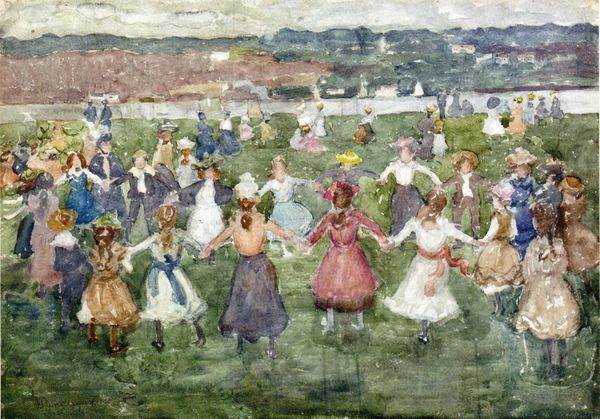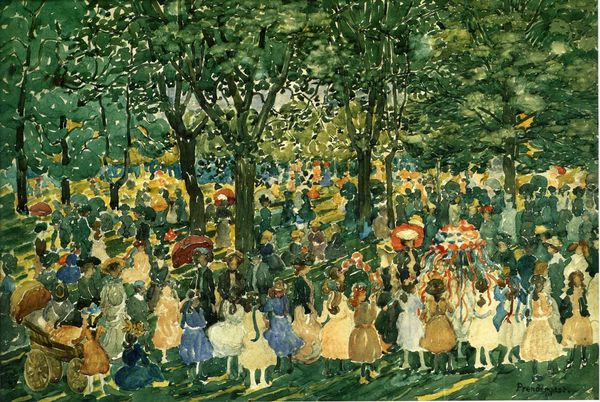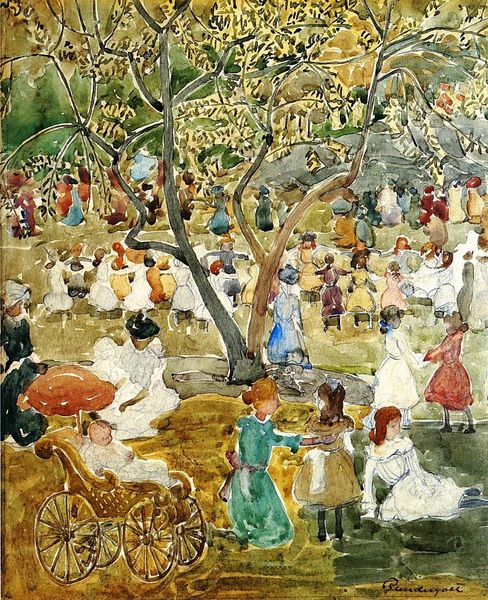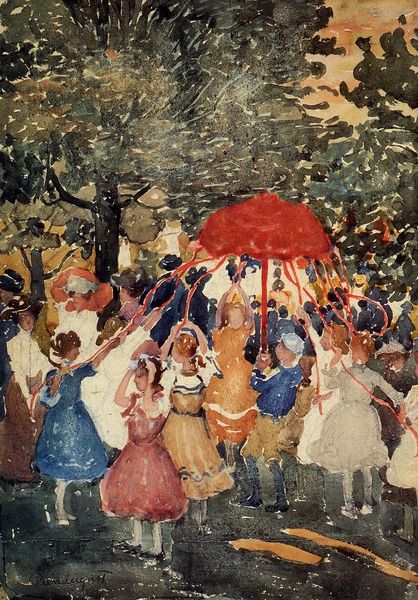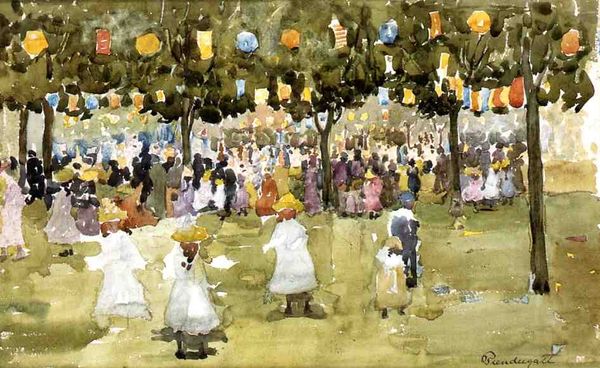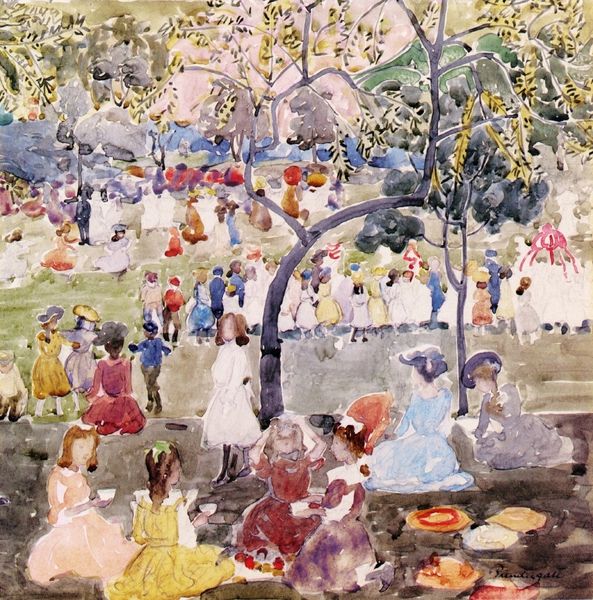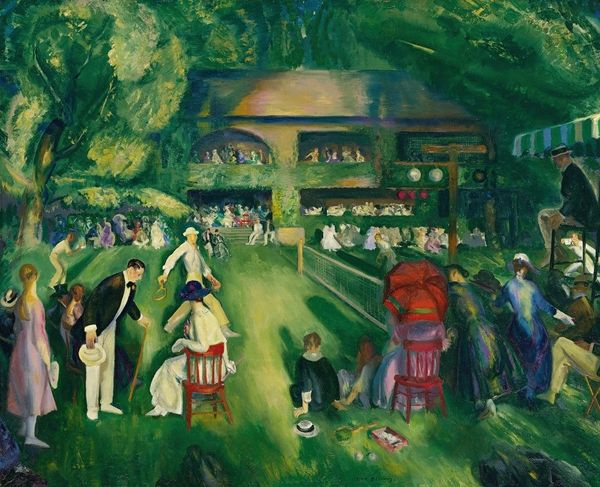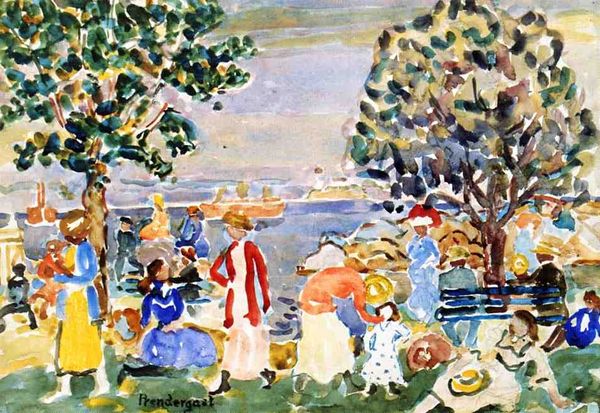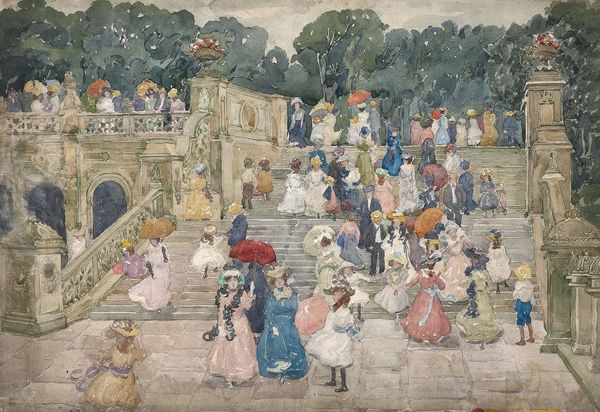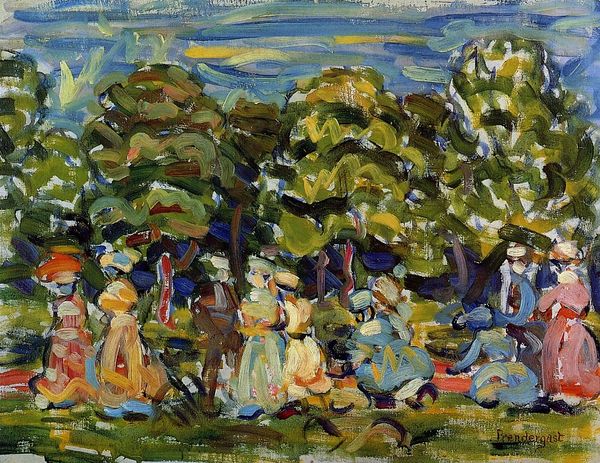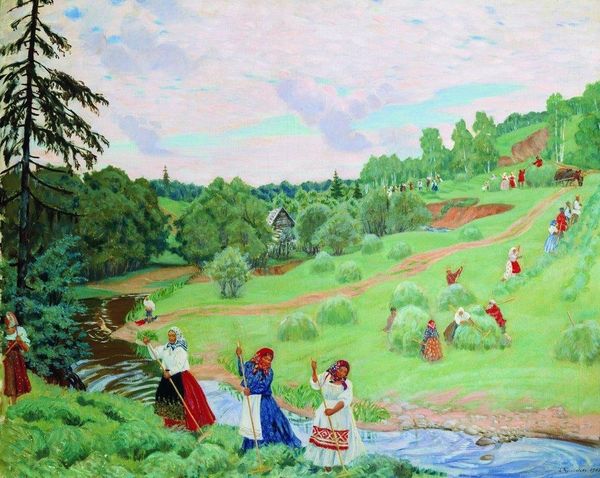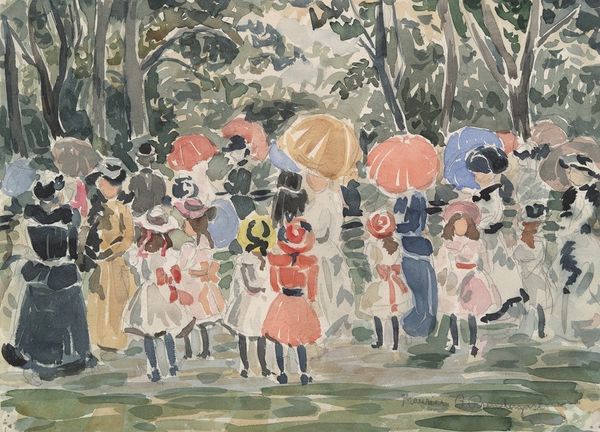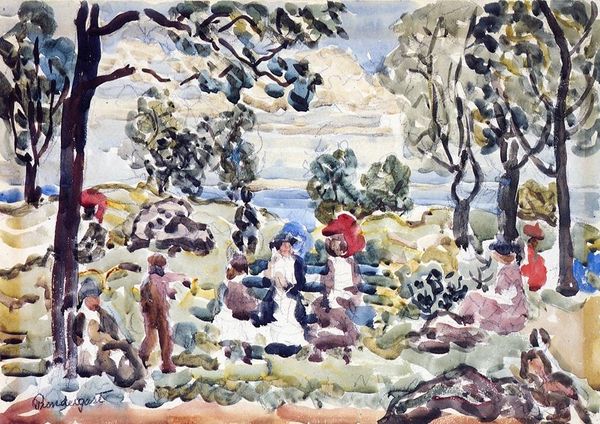
May Day, Central Park (also known as Central Park or Children in the Park) 1903
0:00
0:00
mauriceprendergast
Private Collection
Dimensions: 33.02 x 55.25 cm
Copyright: Public domain
Curator: Oh, I am immediately transported. It's joyous and chaotic. A flurry of colour and movement; almost a visual representation of unbridled play. Editor: This is Maurice Prendergast's "May Day, Central Park," painted in 1903 using oil on canvas. What seems like simple joyousness, actually hints at societal structures. Curator: Structures? I see a liberation of form, Impressionistic dabs creating figures almost dissolving into the landscape. Surely the symbolism is about freedom? Editor: I'd say it's a freedom framed by class. Look closely—the fashion, the leisurely gathering. Central Park in 1903 wasn’t a space equally accessed or enjoyed. This scene speaks of a privileged experience, even the apparent 'melting' you described may be reflecting certain erasures. Curator: Perhaps. But those delicate brushstrokes, capturing light filtering through trees, the festive banners... that carries powerful cultural resonance. The Maypole tradition stretching back centuries, of spring festivals— Prendergast, for me, links those ancient roots to contemporary urban life. Editor: And that connection isn't neutral. Who gets to partake in and define those traditions, then and now? Whose joy is centered? This could be read as an almost utopian depiction, which in its optimism maybe glosses over existing inequalities in access to leisure. Curator: But art isn't always about direct representation, is it? The Impressionists sought to capture a feeling, a fleeting moment. Surely the point is to experience the carefree sensation, a vision of unity, however transient? To allow ourselves to want this to be how society truly could exist. Editor: I agree, feelings matter! I simply feel we should confront art's complicity too. By examining whose feelings get foregrounded, we gain better context and critical tools to engage with historical paintings. This kind of art makes us ask deeper questions about who has a right to public space, past and present. Curator: I suppose appreciating the carefree spirit doesn't exclude us from also considering that spirit's reach. A lovely dialogue emerges from his plein-air style after all. Editor: Indeed! Prendergast gifts us not just a scene, but an invitation to contemplate the complex layers of social reality painted upon it.
Comments
No comments
Be the first to comment and join the conversation on the ultimate creative platform.
